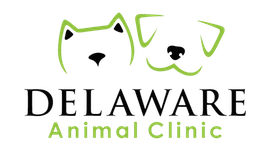
Many of my doggie patients seem to really enjoy visiting the vet’s office. Whether it is the grand adventure of a car ride, seeing old friends and meeting new ones, or all of the dog “cookies” they get during their visit, their experience is most often a positive one.
Cats, however, are another story. I do not think that many of my feline patients are telling their buddies, “Yippee! I get to see my doctor today”. The good news is that there are things you can do at home to help prepare your cat for the vet visit to make the experience as stress free as possible.
The American Association of Feline Practitioners has published a set of guidelines designed to make veterinary visits more feline friendly. At an early age, if possible, start the process of adapting your cat to carriers. The carrier should be seen as a positive, safe place. Make the carrier a part of your everyday home environment, with soft bedding, toys, and treats or catnip placed inside the carrier.
Once your cat becomes accustomed to the carrier, start taking occasional short rides in the car. Be sure to properly secure the carrier with a seat belt to prevent excessive jostling and help provide protection in case of a sudden stop, turn or accident. A towel placed over the carrier may increase your cat’s sense of security.
If a vet visit is necessary and your cat has not been accustomed to the carrier, put the carrier and your cat in a small room with limited hiding spaces. Your cat may seek the carrier on his own as a secure hiding space. Taking the top off of a carrier lined with comfortable bedding may also entice your cat to enter. Misting the carrier with Feliway, which is a synthetic feline facial pheromone spray, about 30 minutes prior to the trip can also comfort your cat and help relieve stress.
Taking your cat for “practice vet visits” may also be beneficial for some cats. A trip to the vet typically involves such unpleasantries as needle pokes and rectal temperature taking. It is no wonder that cats object! Rehearsal visits should involve only positive experiences. Bring your cat to meet the clinic staff and get accustomed to the smells and sounds while getting treats and extra pats and loving. Reward all desired behavior. Let your cat explore the exam room and feel comfortable.
While in the familiar surroundings of your home, practice performing some procedures that mimic what is done during a veterinary exam. Handle your cat’s paws to prepare for nail trimming. Massage and look into your cat’s ears and feel along your cat’s body and limbs in preparation for the physical exam. Open your cat’s mouth in association with his favorite treat. Getting your cat used to having his mouth opened can make future administration of medications easier, pave the way to tooth brushing, and facilitate oral exams by your veterinarian. Ask your veterinary staff to demonstrate the proper way to perform these “practice exams” at home.
Cats can sense when you are stressed or nervous, which in turn can increase their anxiety. Stay calm and remain positive. Bring familiar toys, treats, food or bedding to make your cat feel more relaxed. Give yourself plenty of time before your appointment to locate your cat and encourage him to enter the carrier on his own.
Despite your best efforts, there still will be some cats that become very aggressive and unmanageable during a veterinary visit. In these instances, it is often safer and less stressful to administer anti-anxiety or sedative medications to your cat. If you have such a cat, be sure to discuss your concerns with your veterinarian.
Finally, when your cat goes back home, he may be carrying unfamiliar objects (such as a bandage) or smells from the clinic on him. Other household cats may not recognize him and could possibly even attack this invading “stranger”. Bring something that smells like home to place in the carrier for the return trip. Do not encourage interaction between cats until you know how everyone is going to react. With some planning and practice, you can help reduce the stress associated with your cat’s visits to the veterinarian.
